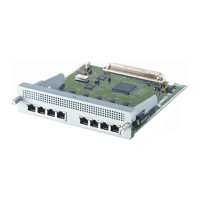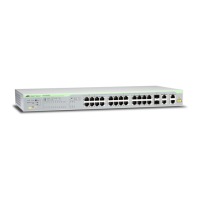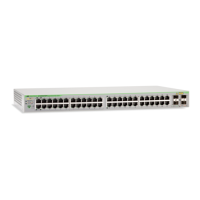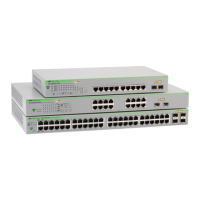Introduction EPSR+ and EPSR++ (Multiple Link Failure)
Software Reference for SwitchBlade x3100 Series Switches (Layer Two Switching)
4-122
The initial configuration of the FORWARDING parameter is set using the SET VLAN INTERFACE command
for the ports in all the systems in both networks. Note that the master node ports are manually configured as
upstream or downstream and remain so, whereas the transit node ports could be configured as UCP -
eventually stabilizing as upstream or downstream as the topology dictates.
4.6.6 EPSR+ and EPSR++ (Multiple Link Failure)
The fault detection and recovery procedure described in 4.6.4 hold true when there is a single link failure in the
network. In case of multiple link failure, one or more of the transit nodes can become isolated and remain in
isolation even after the recovery of one or more failed links; these recovered links could have provided some
level of connectivity to the node, if not for concern over network loops. Refer to the following figure, which
shows a multiple link failure scenario.
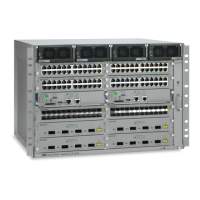
